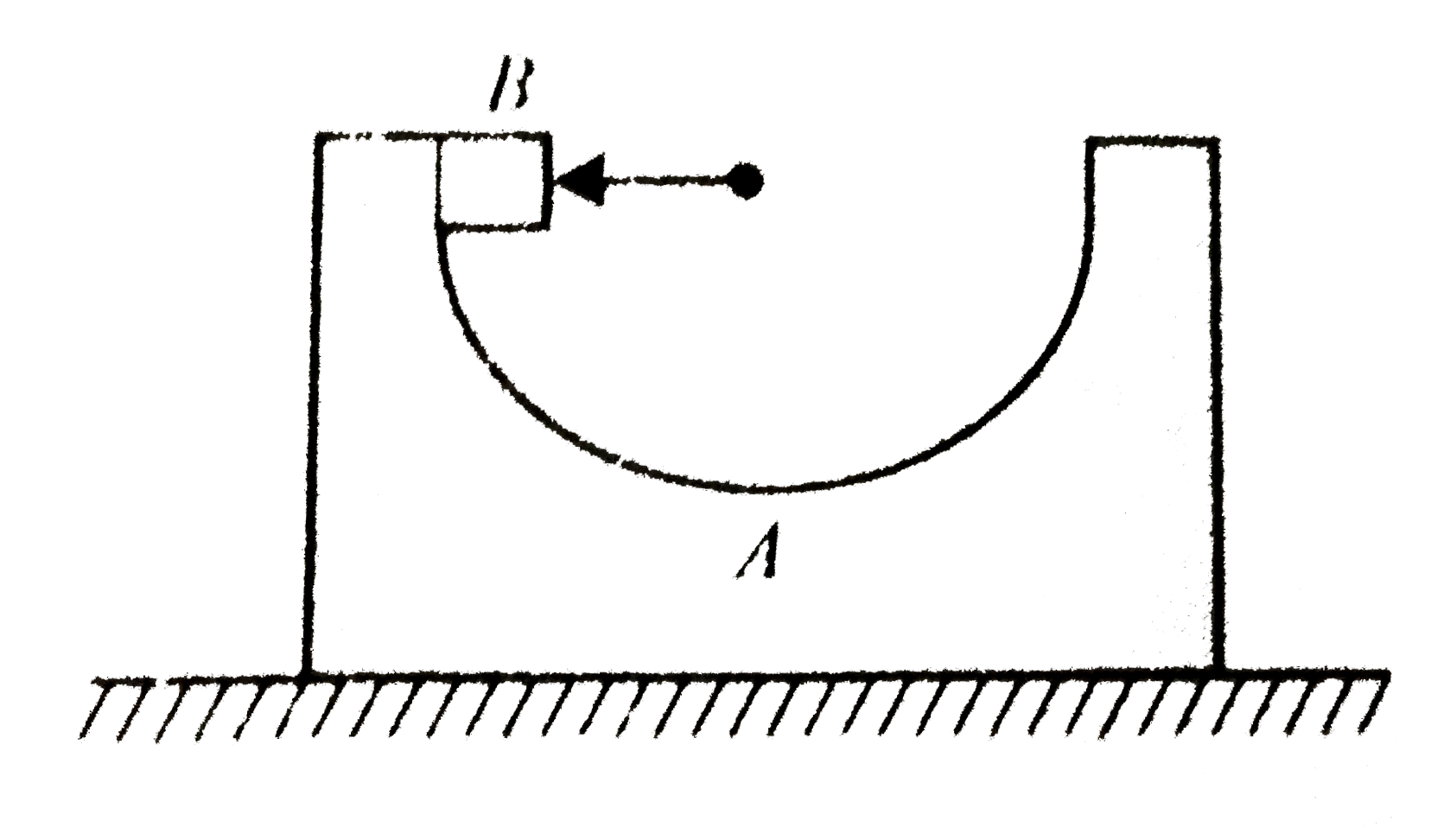Figure shows the vertical section of a frictionless surface. A block of mass 2kg is released from rest from position A, its KE as it reaches position C is (g=10ms−2)

108J
40J
140J
280J
The correct Answer is:C
Step by step video & image solution for Figure shows the vertical section of a frictionless surface. A block of mass 2kg is released from rest from position A, its KE as it reaches position C is (g=10ms^-2) by Physics experts to help you in doubts & scoring excellent marks in Class 12 exams.
Updated on:21/07/2023Topper's Solved these Questions
Similar Questions
The r.m.s speed of the molecules of an ideal gas Is V0 If pressure of the gas is halved but temperature is kept constant then r.m.s. speed of the gas molecule will be
View SolutionWhen two bodies collide elastically, then
View SolutionFigure shows the vertical section of a frictionless surface. A block of mass 2kg is released from rest from position A, its KE as it reaches position C is ( g=10ms^-2 )
View SolutionFigure shows a block A of mass 6 m having a smooth semicircular groove of radius a placed on a smooth horizontal surface. A block B of mass m is released from a position in groove where its radius is horizontal. Find the speed of the bigger block when the smaller block reaches its bottom most position.
View SolutionTwo masses as shown in figure. Are released from their positions. Calculate the velocity with which the mass of 5kg touches the surface if its initial heigth from the surface is 4m. Also, show that the gain in KE of the system is equal to loss in its P.E. Take g=10ms^(-2) .
View Solution
A block is released from position A in the following figure. Find the speed of the block in position B. Assume the surface as frictionless.
View SolutionIn the figure, the vertical sections of the string are long. A is released from rest from the position shown. Then

View SolutionFor the figure shown, block of mass m is released from the rest. Find the distance of the wedge from initial position, when block m arrives at the bottom of the wedge. All surfaces are frictionless.
View SolutionA block of mass M is placed on the top of a bigger block of mass 10 M as shown in figure. All the surfaces are frictionless. The system is released from rest, then the distance moved by the bigger block at the instant the smaller block reaches the ground :

View SolutionIn the figure, the vertical sections of the string are long A is released from rest from the position show.
View SolutionIn the given figure, Find mass of the block A, if it remains at rest, when the system is released from rest. Pulleys and strings are massless. [g=10m/s2]

View SolutionA block of mass m slides along a frictionless surface as shown in the figure. If it is releases from rest from A what is its speed at B?

View SolutionA block of mass M is placed on the top of a bigger block of mass 10 M as shown in figure. All the surfaces are frictionless. The system is released from rest, then the distance moved by the bigger block at the instant the smaller block reaches the ground :

View SolutionFigure shows the vertical section of a frictionless surface. A block of mass 2kg is released from rest from position A, its KE as it reaches position C is (g=10ms−2)

View SolutionFigure shows a block A of mass 6m having a smooth semicircular groove of radius a placed on a smooth horizontal surface. A block B of mass m is released from a position in groove where its radius is horizontal. Find the speed of the bigger block when the smaller block reaches its bottom most position.

View SolutionIn the given figure, Find mass of the block A, if it remains at rest, when the system is released from rest. Pulleys and strings are massless. [g=10m/s2]

View Solution
